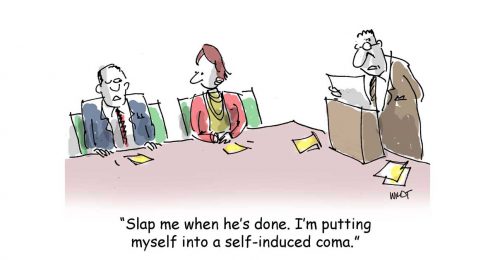In 2020, many nonprofits struggled profoundly for one main reason: they had all their development eggs in a fundraising event basket.
The pandemic made the need for a diverse fundraising strategy quite clear, and forced nonprofit leaders to explore innovative, alternative revenue streams. This was, in my mind, one of the treasures nonprofit leaders found in the darkness of this time.
Fast forward to today, three years later. Guess what?
They’re BAAAAAAAACK!
The annual gala is back in full swing. Yes, it’s true. People are really hungry to be back in the community. And that is important. And of course you need to diversify your nonprofit’s revenue to support your good work.
Then there is the flip side… over the past three years, you didn’t need to scramble for the deposit on a venue or debate over seating arrangements or centerpieces with your development committee. No swirling tornado of activity swallowed you and your team whole for months leading up to each fundraising event. And without the gala, expenses were WAY lower. So you connected the dots between gala revenue and gala expenses and were reminded:
Special fundraising events cost a pretty penny.
As fundraisers at nonprofit organizations wade back into the event fundraising waters, I am hearing stories from nonprofit fundraisers and development directors of galas that have lost money or galas that netted far less than projected.
Perhaps you are thinking that I am not a fan of galas and that the pandemic taught us to steer clear of them.
Nope.
I am a HUGE advocate of special events as a healthy part of your nonprofit’s revenue portfolio.
I just want us to see galas and other fundraising events with a new set of eyes. A perspective informed by a deeper and broader understanding of what you really missed when you could not have them. And a perspective that sees galas as investments as well as fundraisers.
Wait, what? Fundraising events as investments?
Yes, stay with me.
You see, it is time to redefine gala and fundraising event success and see them for the broad range of benefits they offer your organization.
Maybe you lost money on your gala but does that really make it a flop?
Let’s redefine success before you reach that conclusion.
THE FIVE KEY FUNDRAISING EVENT SUCCESS METRICS
- Did your fundraising event help expand the footprint of your organization?
Efforts to sell tickets are not just about the event P&L. We need to engage the board, staff, and volunteers to invite folks who would be enriched by knowing about the terrific work of your organization. Maybe it is a potential donor or maybe it is a lead or prospect in your board nominating pool. Maybe it is the head of your company’s Employee Resource Group (ERG) who might be able to diversify your volunteer base. Maybe a well connected member of the media or a journalist.
- Did your fundraiser fire up your audience about your nonprofit organization? The need? Your impact?
How often have you heard event chairs say the following during planning? “We need to keep the program part short- people are there for networking and we must keep the program tight.”
Of course the event can’t go on and on but every event must include a thoughtful, powerful, compelling program. Ideally, the event is actually mission centric. The GLAAD Media Awards are a perfect example of this—- the event is built around a mission centric program.You leave understanding what GLAAD is about and why its work is so needed.
- Did your last special fundraising event help you create a community of organizational champions?
With a powerful program, the room has this special energy that comes from a community of new and current organizational friends aligned around something meaningful and powerful. It’s contagious. May be hard to capture in a metric or a KPI but it is to be harnessed. Don’t worry. I’m getting to that part.
- Did it help your nonprofit garner public visibility?
Yes, events can be expensive but if you can create something newsworthy, you can garner very, very valuable earned media. And no, a B- list celebrity masters of ceremony will not get you there. But launching a new initiative or revealing a new study that makes the case for your organization? Or if it’s not a gala, a newsworthy, provocative panel at a conference. Think about what might garner the attention of the media. It can exponentially increase the value of your event.
- Most importantly, did your fundraising event help fuel your work?
Of course generating revenue from your event is important and is likely higher on the list than #5. Please do everything you can to engage pro bono services in exchange for visibility of their brand/ services to keep costs low. Empower volunteers to lead. And please please please divert the attention of your board members away from meeting planning and toward ALL of the success metrics of the event. It will help them think about their contacts and put special events in a totally different context for them.
THE BONUS METRIC THAT TAKES A SPECIAL EVENT OVER THE TOP
I often think about special events as BAIT. Did I fill my organization’s pond with interesting ‘fish” who would benefit from knowing more about the work? DId I light them up about that work. Did I ignite them to know and do more?
The answer should be yes.
And then, plan a series of activities of all sorts to nurture the heck out of attendees. Engage staff and board in the effort. Maybe a small cocktail party, maybe 1:1 coffees, maybe a request for pro bono support.
THIS is when special events really pay off. AFTER the event is over. So make the 90 day post event time frame a part of event planning and not an afterthought.
And when you look at all the metrics and then the 90 day post event nurturing and solicitation, then you can thoughtfully consider just how successful your event was and if the efforts really paid off.
Incorporate these metrics into your planning and you and your board will enjoy the sweet smell of special event success.
Curious about what it takes to be an outstanding nonprofit leader? Join me for this free workshop, where I’ll dive deeper into the practices, mindset, and leadership skills of the nonprofit sector’s top superheroes, and help you to fully understand the difference between nonprofit and for profit leadership. Trust me, it’s a real game-changer.



